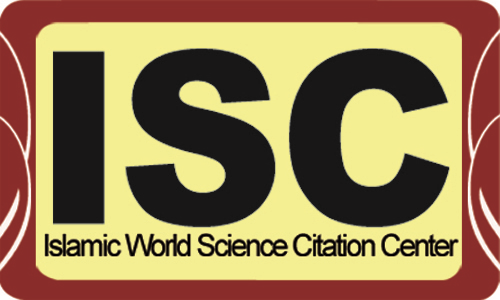Sound level exposure in the residential and peace zones of Kathmandu valley and its effects on human health
DOI:
https://doi.org/10.5281/zenodo.7332209Keywords:
Decibel, Equivalent Noise, noise pollution, residential zone, silent zoneAbstract
Noise is referred to as an unwanted sound that has been found rapidly increased in Kathmandu as a result of the city's rapid urbanization. This study aims to determine sound level exposure in Kathmandu's residential and silent zones. The noise level was measured from November to December 2021, using a sound level meter at 15 locations in the morning, afternoon, and evening from 9 to 10 a.m., 1 to 2 p.m., and 5 to 6 p.m., respectively. The average noise level in the silent zone was found to be highest in Amrit Campus (80.46 dB (A)) and lowest in Teku Hospital (62.24 dB (A)). Similarly, the average noise level was highest in Banasthali (71.88 dB (A)) and the lowest in Dallu (66.02 dB (A)) of the residential zone. This result showed that the equivalent noise level is above the prescribed national noise level standard and the World Health Organization standard. The survey results show that automobiles and loudspeakers are the main sources of noise pollution. The survey also reflects that the female population is affected by noise from the neighborhood a little more than the male population. The major adverse impacts of noise include interference with communication and annoyance. Generally, a request to reduce or stop is favored by most of the respondents. Public education was found to be the most effective tool to control noise pollution. Therefore, the government should prioritize public awareness as well as a noise barrier to minimize the effect of noise pollution.
References
Ademola, R. A. (2012). Urban Environmental Noise Pollution and Perceived Health Effectsin Ibadan , Nigeria. African Journal of Biomedical Research, 15(2), 77–84.
Ahmed, S. (2018). Noise Pollution, its Sources and Effects: A Case Study of University Students in Delhi Saba Ismail.EPRA International Journal of Economic and Business Review, 259, 15–23.
Atkinson, R. (2007). Ecology of sound: The sonic order of urban space. Urban studies, 44(10), 1905-1917. DOI: https://doi.org/10.1080/004209807014719
Bhargawa, G. (2001). Development of India’s Urban and Regional Planning in 21st Century. Gian Publishing House, New Delhi, pp.115-116.
Chauhan, A, & Mahavidhalaya, S.P.R.C. (2008). Study of noise pollution level in different places of Haridwar and Dehradun City ( India ). Environment Conservation Journal, 9(3), 21–25.
Chauhan, A., & Pande, K. K. (2010). Study of noise level in different zones of Dehradun City, Uttarakhand. Report and opinion, 2(7), 65-68.
Chauhan, A., Pawar, M., Kumar, D., Shukla, S. K., Kumar, P., & Mohit, B. (2010). Assessment of noise level in different zones of Haridwar City, Uttarakhand. New York Science Journal, 2(7), 50–53.
Dora, C., & Dora, C. (1999). A different route to health : implications of transport policies. British Medical Journal, 318, 1686-1689. DOI: https://doi.org/10.1136/bmj.318.7199.1686
Halonen, J.I., Dehbi, H.M., Hansell, A.L., Gulliver, J., Fecht, D., Blangiardo, M., Kelly, F.J., Chaturvedi, N., Kivimäki, M., & Tonne, C. (2017). Associations of night-time road traffic noise with carotid intima-media thickness and blood pressure: The Whitehall II and SABRE study cohorts. Environment International, 98, 54–61. DOI: https://doi.org/10.1016/j.envint.2016.09.023
Holbraad, M. (2012). Truth beyond doubt: Ifá oracles in Havana. HAU: Journal of ethnographic theory, 2(1), 81-109.
Hunashal, R. B., & Patil, Y. B. (2012). Assessment of noise pollution indices in the city of Kolhapur, India. Procedia-Social and Behavioral Sciences, 37, 448-457. DOI: https://doi.org/10.1016/j.sbspro.2012.03.310
Joshi, S. K., Devkota, S., Chamling, S., & Shrestha, S. (2003). Environmental noise induced hearing loss in Nepal. Kathmandu University medical journal (KUMJ), 1(3), 177-183.
Mondelli, M. F. C. G., & de Souza, P. J. S. (2012). Quality of life in elderly adults before and after hearing aid fitting. Brazilian journal of otorhinolaryngology, 78(3), 49-56. DOI: https://doi.org/10.1590/S1808-86942012000300010
Murthy, V.K., Majumder, A. K., Khanal, S.N., & Subedi, D. P. (2007). Assessment of traffic noise pollution in Banepa, a semi urban town of Nepal. Kathmandu University Journal of Science, Engineering and Technology, 3(2), 12-20. DOI: https://doi.org/10.3126/kuset.v3i2.2891
Nagi, G., Dhillon, M.K., Bansal, A.S. & Dhaliwal, G.S. (1993). Extend of noise pollution from household equipment and appliances. Indian Journal of Ecology, 20(2): 152-156.
NHRC (2003) Assessment of noise pollution and development of criteria for its prevention and control. Nepal Health Research Council, Kathmandu Nepal.
Oguntunde, P. E., Okagbue, H. I., Oguntunde, O. A., & Odetunmibi, O. O. (2019). A study of noise pollution measurements and possible effects on public health in ota metropolis, Nigeria. Open Access Macedonian Journal of Medical Sciences, 7(8), 1391. DOI: https://doi.org/10.3889/oamjms.2019.234
Olivera, J. M., Rocha, L. A., Rotger, V. I., & Herrera, M. C. (2011). Acoustic pollution in hospital environments. In Journal of Physics: Conference Series (Vol. 332, No. 1, p. 012003). IOP Publishing.
Oyedepo, O. S., & Saadu, A. A. (2010). Evaluation and analysis of noise levels in Ilorin metropolis, Nigeria. Environmental monitoring and assessment, 160(1), 563-577. DOI: https://doi.org/10.1007/s10661-008-0719-2
Ozer, S., Yilmaz, H., Ye, M., & Ye, P. (2009). Evaluation of noise pollution caused by vehicles in the city of Tokat , Turkey. Scientific Research and Essay, 4(11), 1205–1212.
Pradhan, P. K. (2004). Population growth, migration and urbanization. Environmental consequences in Kathmandu valley, Nepal. In Environmental change and its implications for population migration (pp. 177-199). Springer, Dordrecht. DOI: https://doi.org/10.1007/978-1-4020-2877-9_9
Raycraft, J. (2019). “In search of a good life”: Perspectives on village out-migration in a Tanzanian marine park. Journal of Rural Studies, 70, 36–48. DOI: https://doi.org/10.1016/j.jrurstud.2019.05.005
Singh, P. (1984). Noise pollution. Every Man’s Science. 25(1&2): 231-35.
Singh, N., & Davar, S. C. (2004). Noise Pollution-Sources, Effects and Control. Journal of Human Ecology, 16(3), 181–187. DOI: https://doi.org/10.1080/09709274.2004.11905735
Sterne, J. (2003). The audible past: Cultural origins of sound reproduction. Duke University Press.
Thapa, R. B., & Murayama, Y. (2010). Drivers of urban growth in the Kathmandu valley, Nepal: Examining the efficacy of the analytic hierarchy process. Applied Geography, 30(1), 70–83. DOI: https://doi.org/10.1016/j.apgeog.2009.10.002
WHO. (2018). Environmental noise in Europe, 2020- Publications Office of the EU. In Publications Office of the EU.
Downloads
Published
How to Cite
Issue
Section
License
Copyright (c) 2022 Scientific Reports in Life Sciences

This work is licensed under a Creative Commons Attribution 4.0 International License.




